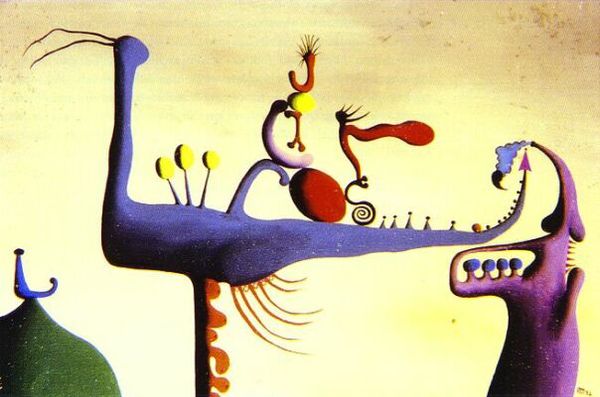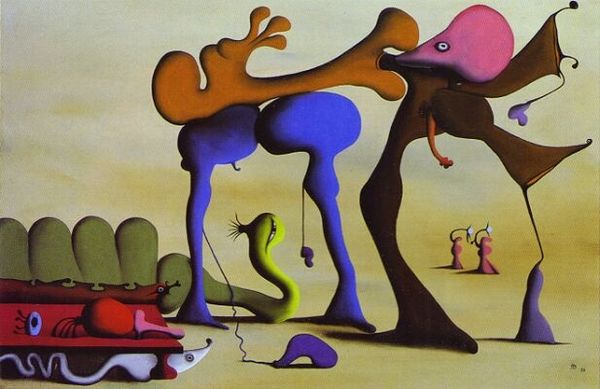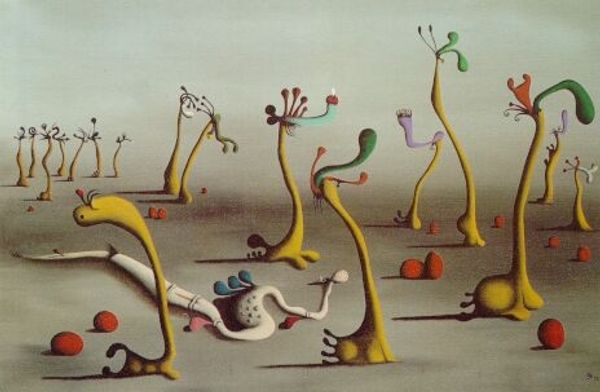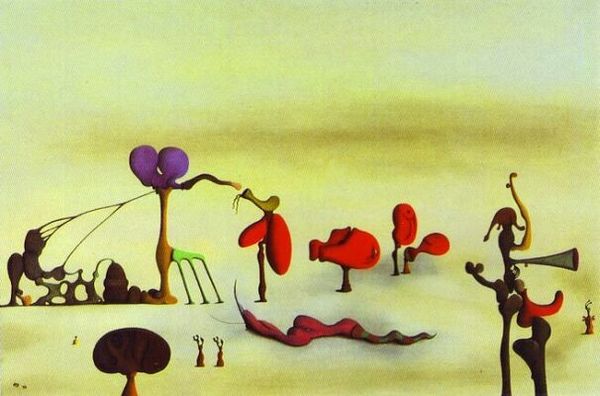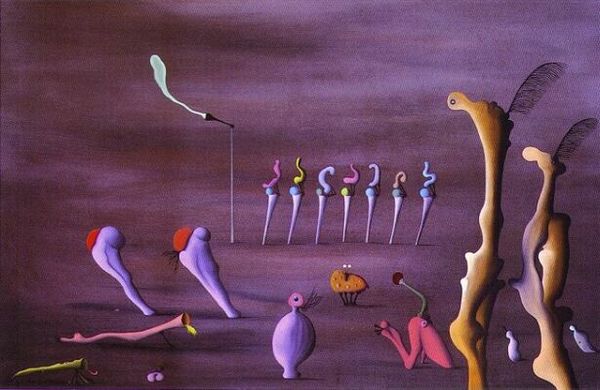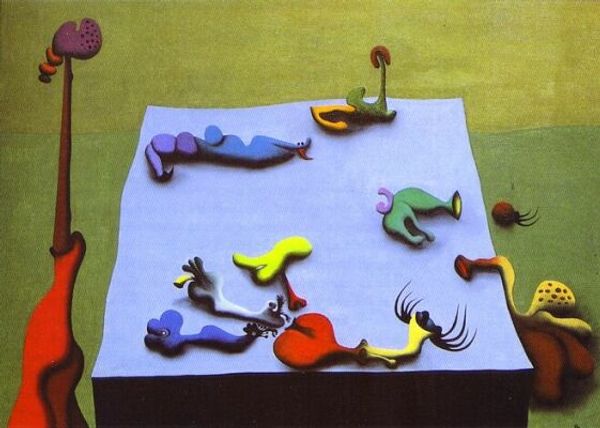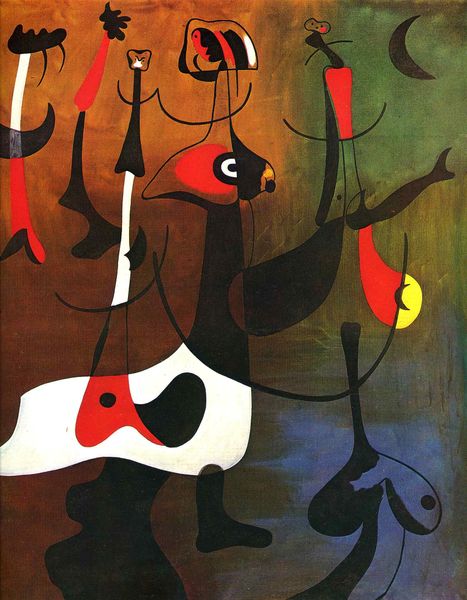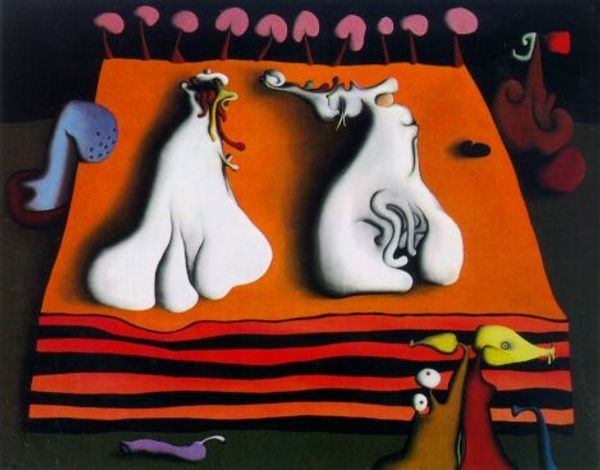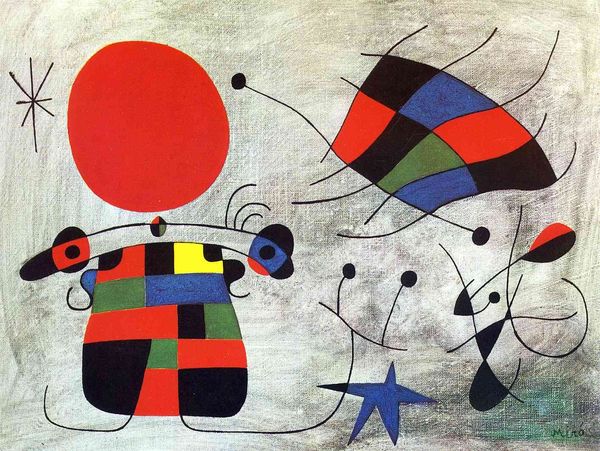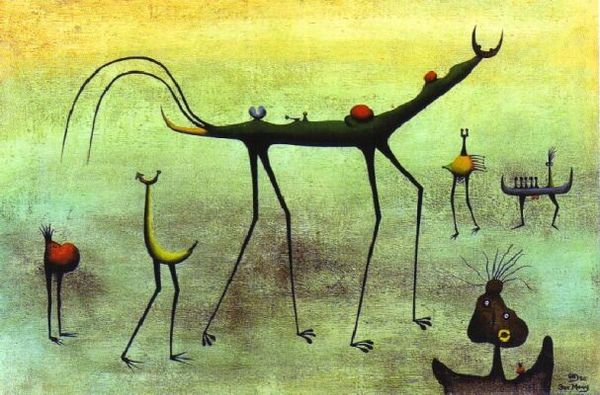
painting, oil-paint
#
contemporary
#
organic
#
painting
#
caricature
#
oil-paint
#
caricature
#
figuration
#
surrealism
Copyright: Desmond Morris,Fair Use
Curator: Welcome. Before us is “The Titillator,” an oil painting created in 1972 by Desmond Morris. Editor: My initial impression is pure, unsettling whimsy. These biomorphic shapes feel almost… internal, like organs escaped from their rightful place. Curator: It is classic Morris, pushing Surrealism into zones of unsettling figuration. He often explored primal urges and subconscious anxieties through such imagery. I see a distinct use of rounded, organic forms and protrusions. How do you perceive that visually? Editor: There's definitely an emphasis on smooth surfaces and a kind of cartoonish hyper-realism. You can almost feel the texture even though it's just oil paint. What’s interesting to me is this implied sense of tension. Everything appears to be straining or about to burst. And it begs the question, who made these pigments? What level of skill went into their mixing and application? Was Morris critiquing commodity fetishism via the use of high-quality paints? Curator: That feeling of tension may be intrinsic to his symbolic language. The configurations imply probing and prodding. Remember Morris’s background in zoology: consider what those gestures and shapes might evoke from an anthropological view. What does "titillation" symbolize here, from cultural and psychological angles? Editor: Possibly some kind of aggressive probing of the modern condition? This almost tactile quality makes the painting feel visceral despite its bizarre imagery. Curator: The colour scheme is rather interesting: ochres, muted purples and a bright almost aggressive crimson red; creating a sense of underlying anxiety. It would be revealing to find if Morris deliberately employed artistic techniques common within this style to make viewers contemplate primal ideas. Editor: Agreed! Well, thinking about production, there is the artist, yes, but there’s also the system enabling production. That context really shapes meaning here, right? Curator: Indeed. “The Titillator," whether stimulating or unsettling, speaks to enduring questions about the nature of existence through its evocative and unusual visual language. Editor: An oddly compelling peek into the biological weirdness around, and within us.
Comments
No comments
Be the first to comment and join the conversation on the ultimate creative platform.
